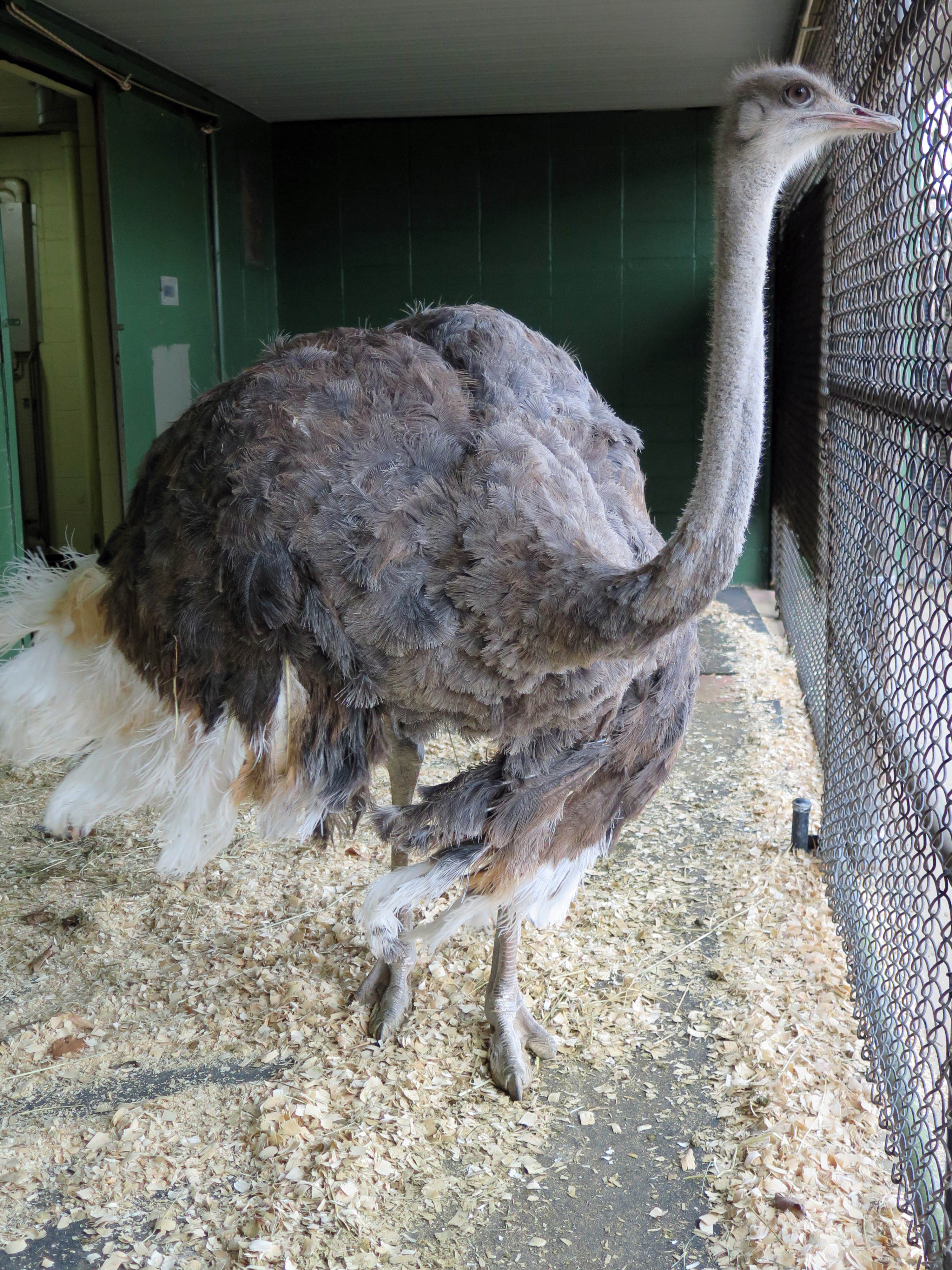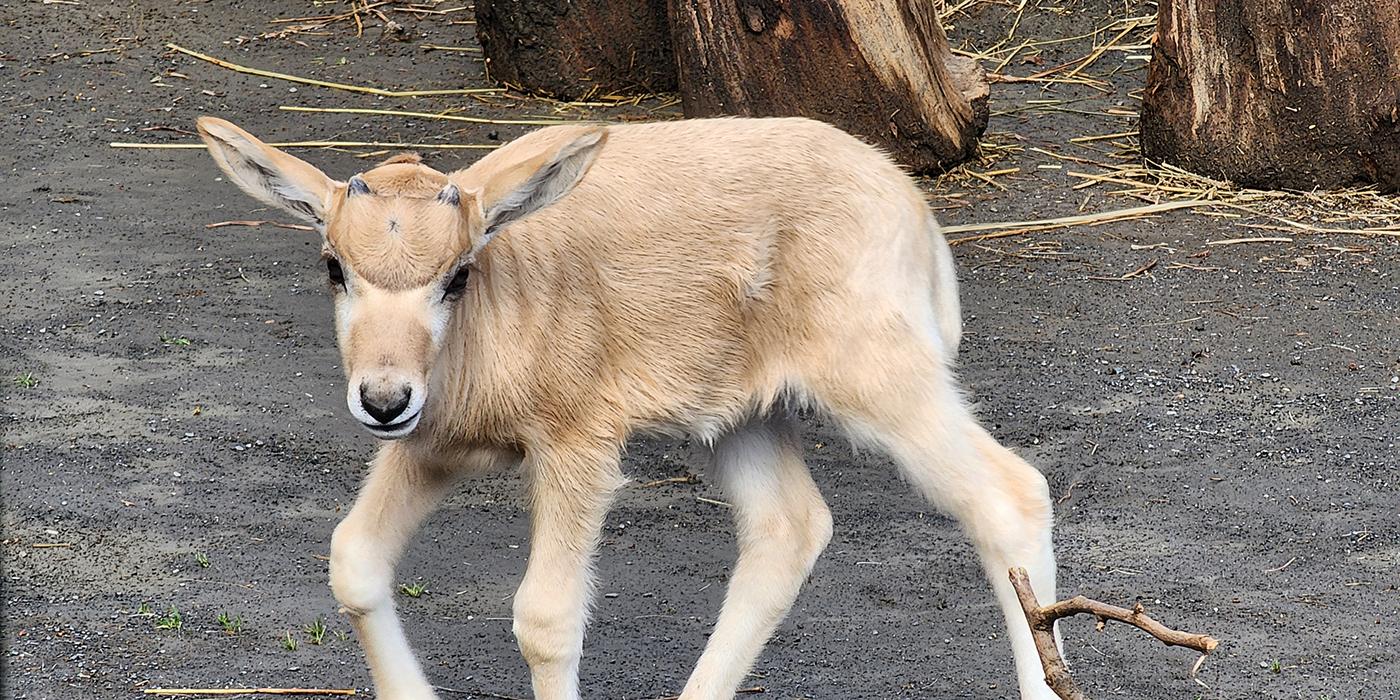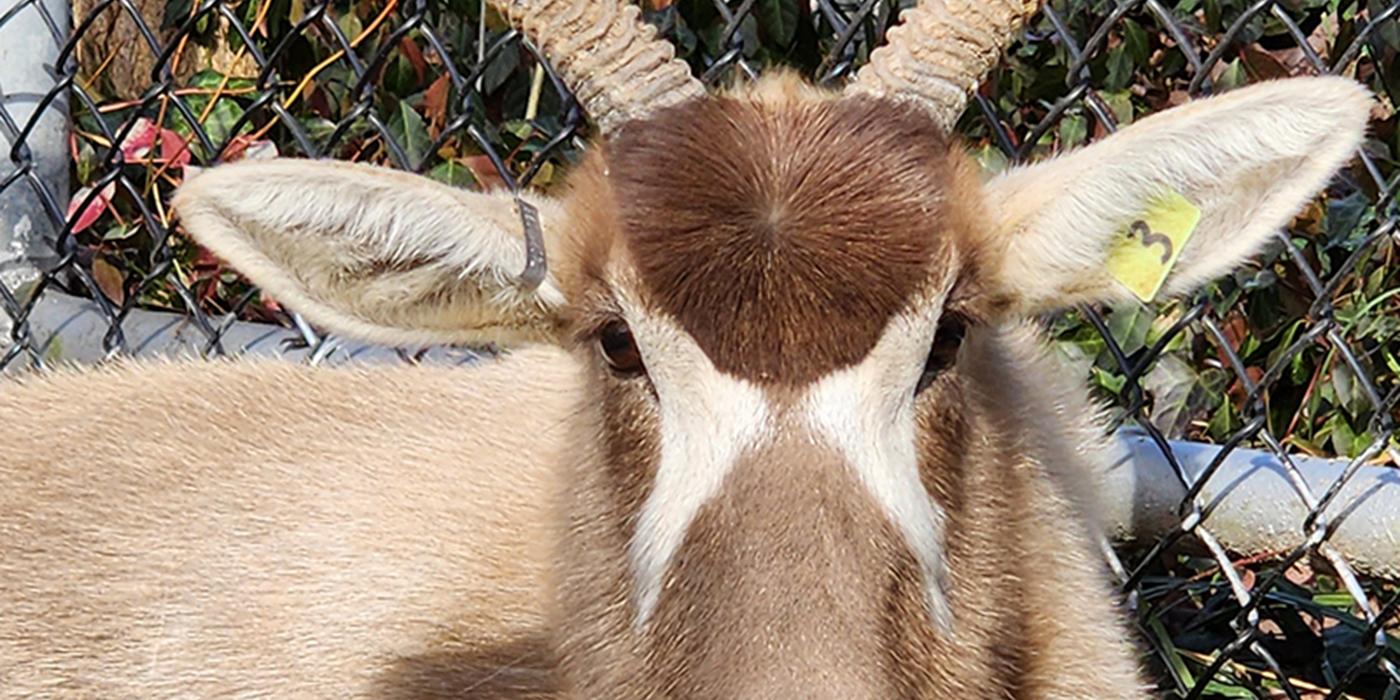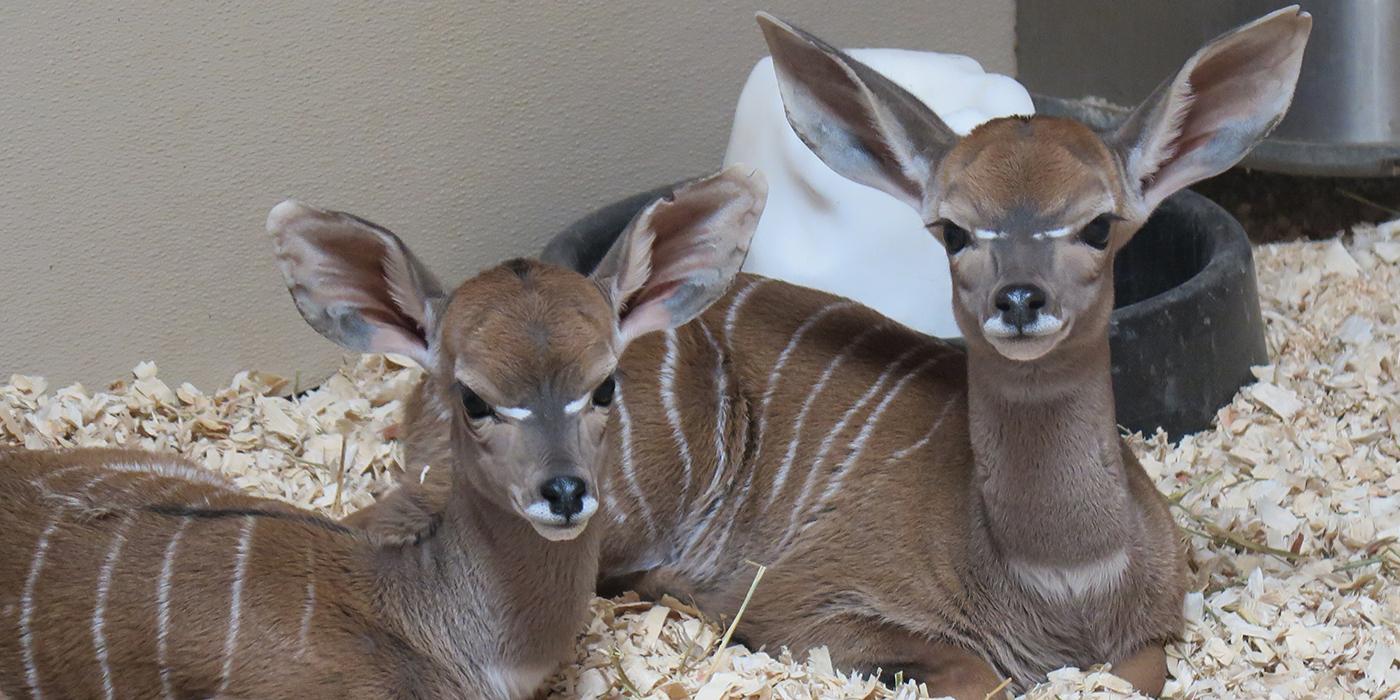Meet Our New Ostrich, Linda!
At around 8 feet tall, the newest resident at the Cheetah Conservation Station towers over her cheetah, red river hog and sitatunga neighbors. Meet Linda, a 4-year-old ostrich who arrived at Smithsonian’s National Zoo in November.
Although our team cares for a variety of birds—namely Abyssinian ground hornbills, Karl and Karoline, and Ruppell’s griffon vultures, Tuck and Natelie—it has been many years since we have worked with a large, flightless bird. Zoogoers may fondly remember our late emu Darwin, who seemed to enjoy watching visitors as much as they enjoyed watching him!

For many members of our team, working with an ostrich is a new experience. As part of Linda’s acclimation process, we have been observing her behavior closely and absorbing all we can learn about her behavior and biology.
While we are still getting to know Linda’s personality and quirks, we can already tell she is going to be a terrific ambassador for her species. Linda is alert and observant; she is keenly aware of new sights and sounds. She is also quite social and seems to enjoy interacting with keepers. That said, she keeps us on our toes. Just when we think we know what she’s going to do, she changes her routine and does something a little unexpected!
Ostriches like Linda may think on their feet, but their legs are their true secret weapon. Adult ostriches can weigh between 200 and 350 pounds—far too heavy to fly. So what happens when an ostrich finds itself in danger? It may fight by kicking at the perceived threat, or it may flee and sprint away at speeds up to 43 miles per hour. In fact, ostriches are the fastest species of bird on land.
To grow big and strong, wild ostriches eat plants and small animals including mice, frogs and insects. At the Zoo, Linda receives pellets that are fortified with vitamins and nutrients, as well as a variety of produce and some insects.
Our animal care team is working hard to prepare the outdoor habitat for Linda and plan to give her access to the exhibit soon, weather permitting. If you are planning a visit to the Zoo this winter, keep an eye on our website and social media channels, as we will be sure to share more about our ostrich’s debut. We hope you’ll stop by and say hello to Linda!
This story appears in the February 2022 issue of National Zoo News.
Related Species:




